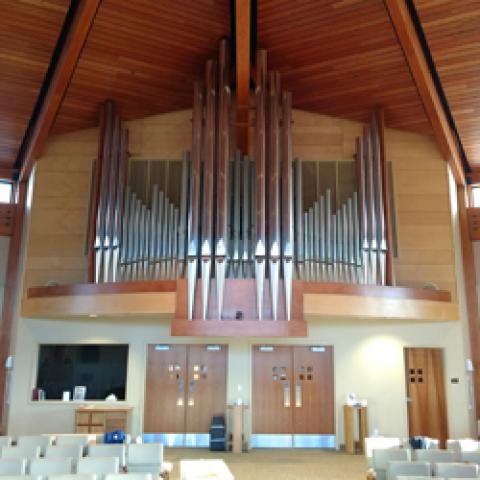
Muller Pipe Organ Company, Croton, Ohio, has finished a project relocating, refurbishing, and enlarging a pipe organ for Emmanuel Lutheran Church, Fort Wayne, Indiana. Emmanuel Church had an 1880s William King & Son organ installed, which consisted of two manuals, 25 stops. Over the generations, the organ was altered and rebuilt, at one point introducing digital voices. The church decided to replace the organ, retaining its extensive façade, which was re-stenciled by Russell Design of Kokomo, Indiana.
Muller obtained Austin Organs, Inc., Opus 2436, built in 1965 for the former First Church of Christ, Scientist, Columbus, Ohio, when that congregation sold its downtown edifice in 2014. Thirty-eight ranks of pipes were retained along with the console, which was refurbished for Emmanuel Church. New electro-pneumatic windchests and mechanisms were provided. For information: www.mullerpipeorgan.com.
Photo credit: Jesse Braswell



